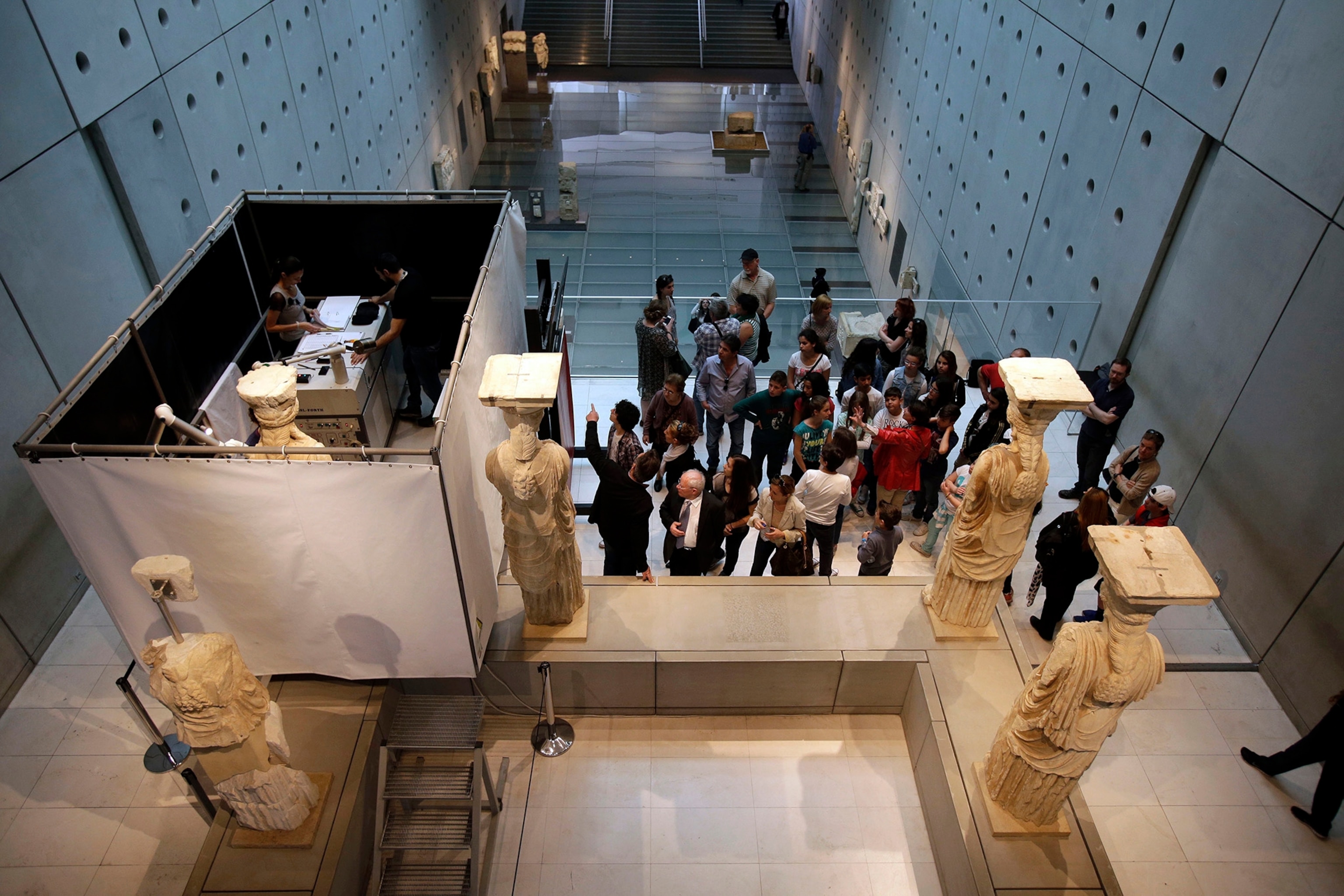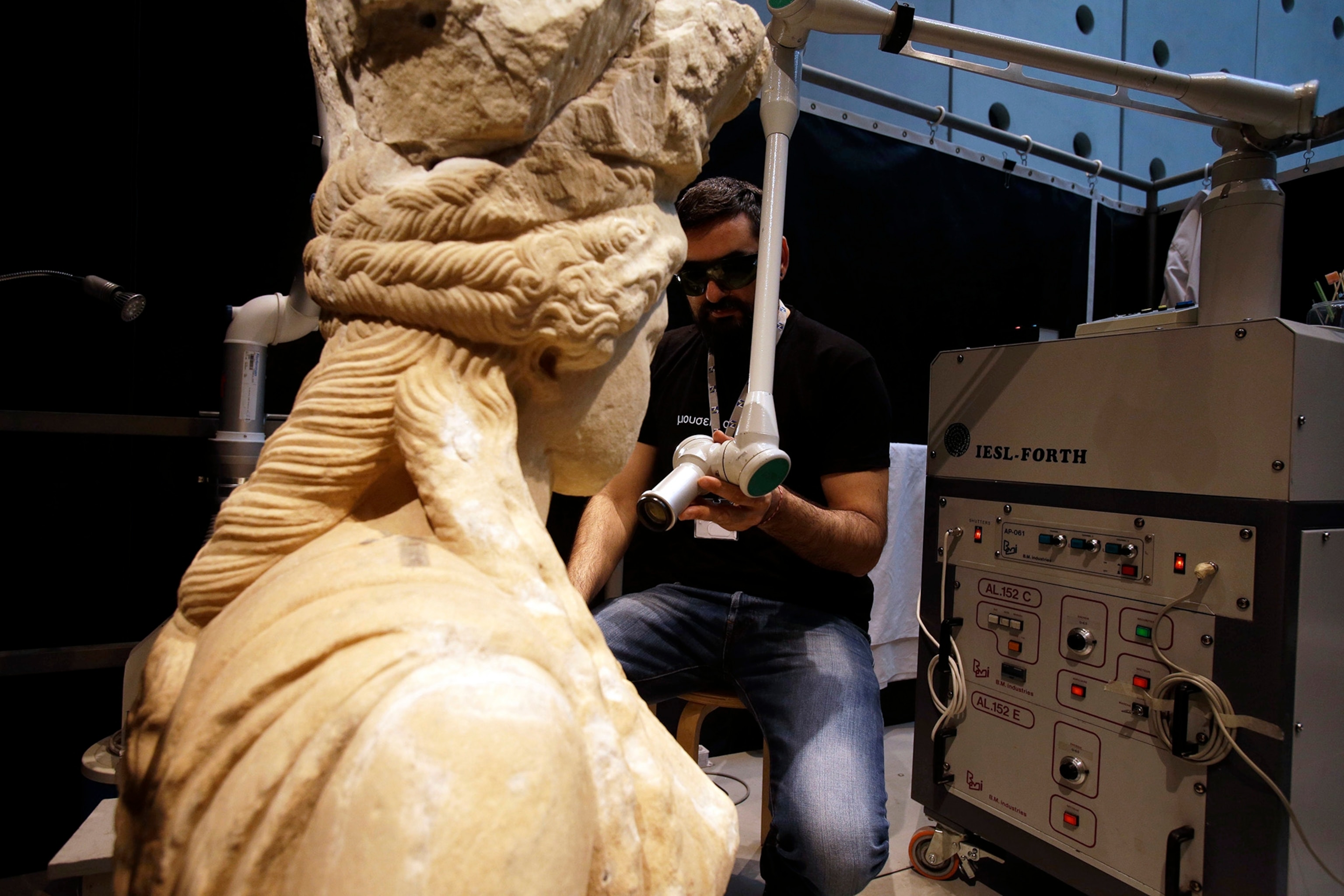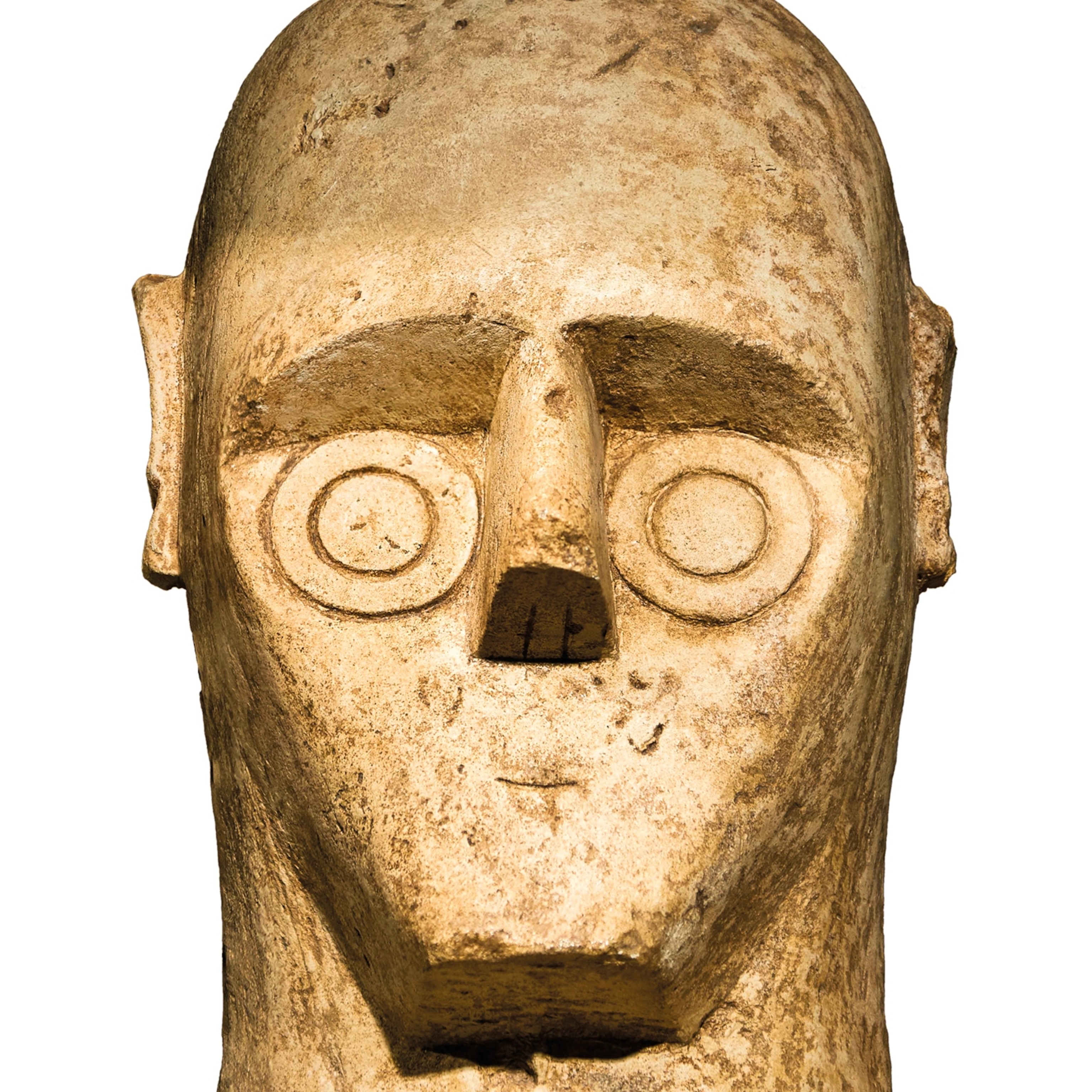2,500-Year-Old Greek Statues Sparkle After Facelift
A special laser removes decades of grime from iconic marble statues in Athens.
Four marble maidens from ancient Greece have just gotten a facelift. Using a specially designed laser, conservators have labored since 2011 to strip away the black grime that encrusted the statues. Today the final figure to undergo the treatment is being revealed in all her splendor in the new Acropolis Museum in Athens, which celebrates its fifth anniversary this Friday, June 20.
Sculpted in the late fifth century B.C., the draped figures served as columns for the Erechtheion, one of the temples that stood on the Acropolis, the sacred rocky hill that rises 512 feet (156 meters) above the modern Greek capital.
The maidens, known as the Caryatids, stand more than seven and a half feet tall (2.3 meters). Originally, six of them held the roof of the Erechtheion's south porch on their heads. One was taken to London in the early 19th century and is now on display in the British Museum. Another was cleaned in 2006 and was not part of the current project.
As Athens rapidly industrialized over the past century, the five figures remaining on the Acropolis suffered gravely from the effects of air pollution. Their golden hue turned dark, and their features began to dissolve under the constant assault of acid rain. In 1979 the figures were moved to the old Acropolis Museum to protect them from further damage, and cement replicas were installed in their place on the Erechtheion's porch.

Larger Than Life
When the new Acropolis Museum opened in 2009, the figures immediately became a magnet for visitors. "For the first time in history, everyone could see them up close, and from all sides," says Katherine Schwab, an art historian at Fairfield University in Connecticut who specializes in ancient classical sculptures. "The Caryatids are over life-size, so there's that sense of an exhibit that's larger than life."
The figures' clothing and hair offer clues to their identity. "These maidens most likely represent young teenagers from elite families of Athens who would be given the lead positions in a religious festival procession," Schwab explains. "The luxuriousness of the hair indicates how healthy and beautiful they were. They were in their prime as maidens. They were very marriageable."
At the start of the cleaning project, conservators decided not to move the maidens, but to work on them where they stood in the museum's public gallery. They focused on one figure at a time in a makeshift room whose walls were sheets of heavy fabric hung from a frame. A video monitor outside allowed visitors to see the statues slowly changing color, like night turning to day.
The curtain walls were a critical safety measure to protect museumgoers' eyes from the laser that conservators, wearing protective goggles, used to clean the statues.

Cleaning by Laser
The laser system uses two pulsed beams of radiation—one infrared and the other ultraviolet—to zap away the statues' dark crust of dust, soot, minerals, and metals.
The beams can be employed separately or in combination, and their intensity can be adjusted depending on the composition and thickness of the grime.
Scientists at the Institute of Electronic Structure and Laser, of the Foundation for Research and Technology-Hellas of Crete, developed the prototype hybrid laser system in the late 1990s to clean sculptures from the Parthenon, the iconic temple on the Acropolis near the Erechtheion.
Conservators and technicians from the Acropolis Restoration Service tested the laser along with several different kinds of cleaning that included chemical poultices and micro-sandblasting. They decided that the dual-wavelength laser system was their best option. It allows for safe, controlled cleaning that leaves the marble's ancient patina intact.

Shift Work
For the Caryatid project, a team of five conservators and one laser technician cleaned each statue in shifts. "We could only stay for a couple hours at a time," says senior museum conservator Constantinos Vasiliadis. "It was detailed work, and very tiring."
Each statue took between six and eight months to clean, millimeter by painstaking millimeter. Some areas went quickly—one online video of the procedure (above) shows the dirt vanishing in an instant. Other areas, where the crust of dirt was especially thick, took much longer. "In those cases, one square centimeter [less than half a square inch] might need three to four passes of the laser," says Vasiliadis. "That could take as long as eight minutes."
In addition to the cleaning, the conservators removed the mortar from old repairs, reattaching fragments with titanium dowels and white Portland cement. They also used a sealing mortar based on silica sand, and they sprayed the marble surface with calcium hydroxide for stabilization.
"This was the first systematic conservation of these figures," says Vasiliadis. "Previous work was more like first aid, when the sculptures were still on the Erechtheion porch, to keep fragments from falling off."

Spectacular Transformation
The maidens' transformation is nothing less than spectacular. "This is the first time in a hundred years that you can see the marble without smoke and dirt and really appreciate the quality of the statues," says Acropolis Museum director Dimitris Pandermalis. "You can see every small detail and the impressive play of light and shadow."
This new look at the maidens is also making scholars smile. "The laser cleaning has been very helpful," says Schwab, whose study of the statues has focused on their elaborately braided hair—which is now beautifully clean. "You can see even more definitively the exquisite nature of these complex hairstyles, which were well preserved at the back of the head and at the inner side of the porch, away from the weather."
A future project may reveal even more of the maidens' original beauty. Their clothing was once brightly painted, but centuries of winter rain have washed away all visible traces of pigment. Modern imaging techniques, though, can peer into the invisible parts of the light spectrum and find long-faded hues.
"We may be able to reveal traces of color in the deep folds of the drapery," says Pandermalis, "the places where the paint would have been best protected."
The result may be even more dazzling than the maidens' current makeover.









